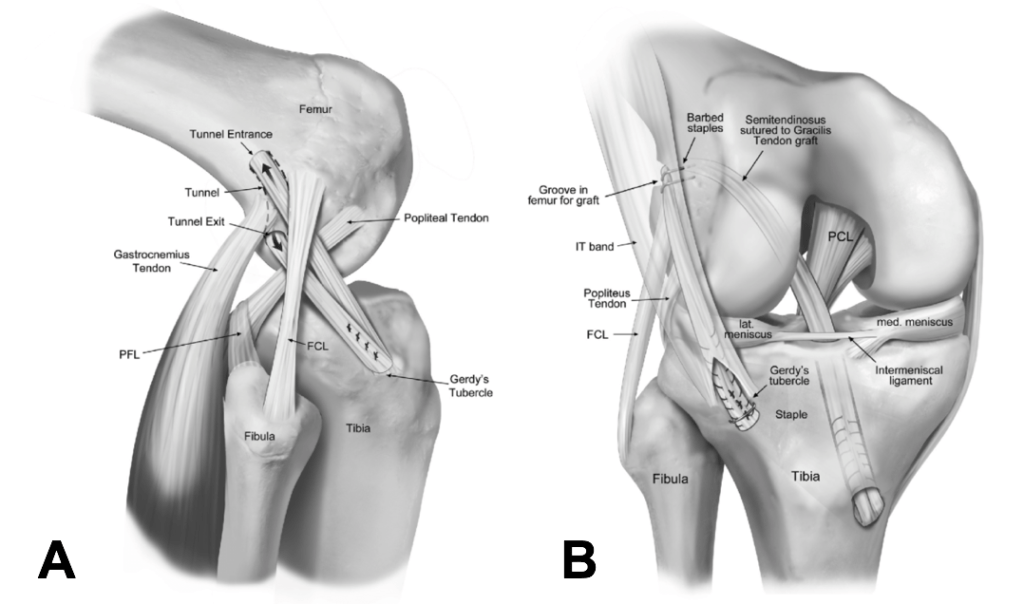ACL injuries affect both athletes and non-athletes in the United States. The ACL is an essential ligament inside the knee joint. It’s responsible for providing stability and supporting movements such as pivoting, jumping and sudden directional changes. Unfortunately, due to its poor healing potential, ACL Reconstruction or surgery is often required to restore full knee function after a tear.

Image credit: jeremyburnhammd.com
If you’ve been diagnosed with an ACL injury, knowing the process of ACL reconstruction and the role of an experienced ACL surgeon, as well as the latest developments in surgical techniques can help you make informed decisions regarding your treatment.
The role of the ACL and why Reconstruction is often necessary
The ACL connects femur, (thighbone), to the tibia (shinbone). It is essential to stabilize the knee joint whenever it moves. The knee’s stability is greatly compromised when the ACL tears, regardless of whether it’s due to a sudden change, landing awkwardly or playing high-impact sports. ACL tears are characterized by swelling, pain and the sensation that your knee is “giving away”.
Minor injuries to other ligaments may be treated with treatment and rest, the ACL’s poor self-healing capabilities mean that surgery is often the most effective option. ACL surgery typically involves either repairing the ligament in uncommon cases or reconstructing it with a tendon-graft.
What Is ACL Reconstruction Surgery?
ACL reconstruction is the process of replacing the torn ligament with a graft, which could be obtained from the patient’s body (autograft) or from a donor (allograft). The quadriceps tendon and the patellar (BTB) are two of the most commonly utilized grafts. Each of these types of grafts comes with unique benefits.
Quadriceps Tendon known for its strong strength and no donor site complications, this graft can provide stability especially for athletes returning to high-impact sports.
Patellar Tendon (BTB): It is often referred to as the “gold standard” in ACL reconstruction, this graft is ideal for people who need the most stability.
Dr. Burnham is a fellowship-trained ACL Surgeon who has conducted extensive research into the grafts. The results are fantastic in terms of knee durability and stability.
Advancements in ACL Reconstruction Techniques
In the past, ACL reconstruction methods placed the graft in a non-anatomical location. This meant that it was not in alignment with the natural location of the ligament originally. This could lead to suboptimal results, such as lower stability and a higher risk of reinjury. The advancements in surgical research and imaging technology have transformed ACL reconstruction.
Today, experienced ACL surgeons such as Dr. Burnham use advanced techniques to position the ligament precisely where the previous ACL was located. This anatomical placement aligns the new ligament with the knee’s normal mechanics and enhances stability and function. The advantages of this precise positioning include:
Risk reduction for injury
Better long-term knee health
Lower risk of developing arthritis
The focus is on precision. It’s the value of graft sizing
One of the key aspects of successful ACL reconstruction is ensuring the graft is of the right size to fit the knee of the patient. Utilizing a combination of MRI imaging and direct surgical observations, surgeons can adapt the graft to the individual’s anatomy. A graft that’s tiny may not be able to provide sufficient stability, while an oversized one could lead to problems. By adjusting the procedure to each patient, ACL surgeons optimize both healing and function.
Why should you select a fellowship-trained ACL Surgeon?
The expertise of your surgeon is essential for the successful completion of ACL surgery. Specialists in fellowship training ACL Surgeons such as Dr. Burnham have extensive experience and training specifically for the treatment of complex knee injuries. The latest surgical techniques they use ensure that every patient receives individual treatment that leads to better outcomes.
Recovering and Long-Term benefits
When they have a proper treatment plan, patients who’ve had ACL reconstruction can return to their regular levels of activity gradually. Physical therapy plays a vital role in recovery. It helps strengthen surrounding muscles and restore the range of motion.
Due to advances in ACL surgery Patients are now enjoying better long-term results, including lower rates of re-injury and enhanced knee stability. Modern ACL procedures are an excellent alternative for anyone looking to get back on the field, or regain an active life.
Final Thoughts
ACL reconstruction is a cry from what it was in the past due to advances in research, technology and fellow-trained ACL specialists such as Dr. Burnham. Through focusing on precision advanced imaging, and personalized treatments, the latest surgical techniques offer patients the best chance for a successful recovery and long-term knee health.
Consult with an ACL surgeon if you suffer from an ACL injury. They can help you through the various options for the best result.